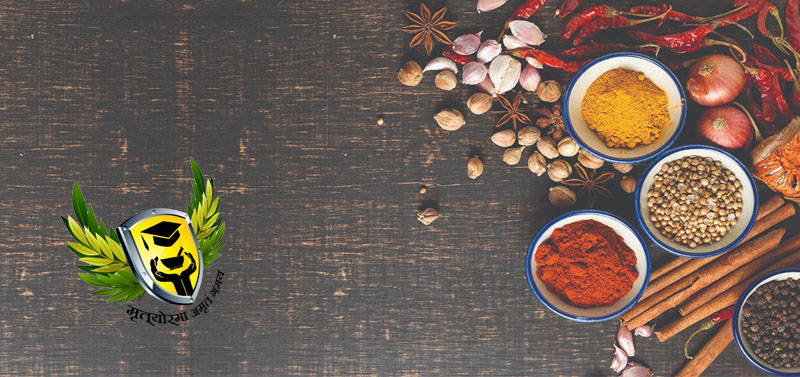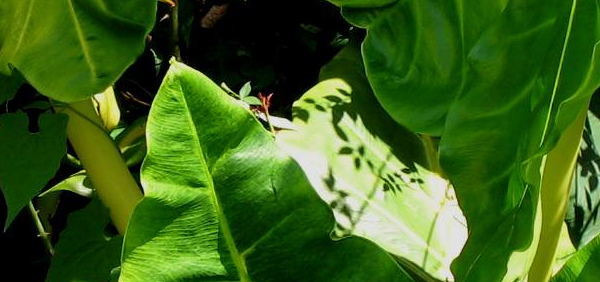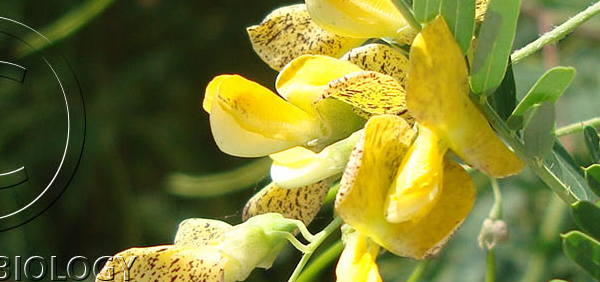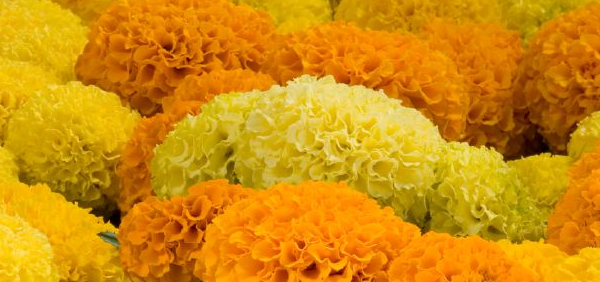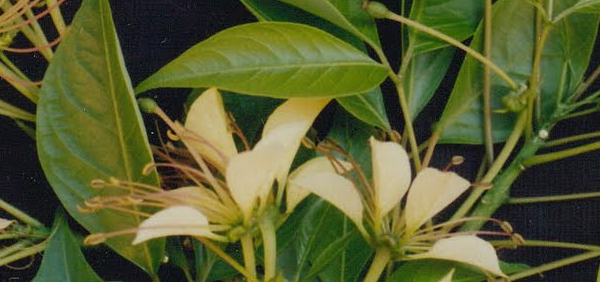krishnacandana :

Geographical distribution:
In India, it is restricted to the Western Ghats, mostly in the high rainfall wet evergreen forests, moist evergreen, semi-evergreen and semi-deciduous forests at 500-750 m altitude (Kolammal, 1978; Sumy et al., 2000; Mohanan and Sivadasan, 2002). It grows well in humus rich soil having good drainage and areas having more than 2000 mm rainfall with an annual mean temperature of 27°C (Ravikumar and Ved, 2000; Sumy et al., 2000). Dried stem and root form the useful parts (Anonymous, 2005; Nambiar et al., 2000). The slow growing liana takes 15 years to reach its reproductive stage. But due to its huge demand for industrial consumption, it gets chopped down before it is fit to regenerate and also the traders directly engage tribals and other collectors for the supply of raw drug. Combination of rampant destruction of the forests along with over exploitation of the species for the raw drug market and very slow rate of regeneration has seriously depleted its population in the wild, making conservational measures very urgent (Tushar and Udayan, 2005). The threat status of this species has been assessed as Critically Endangered for Karnataka, Kerala and Tamil Nadu in India, due to more than 80% decline in the wild populations over the last 30 years (Ravikumar and Ved, 2000). Hence, this species is now banned from export by the Ministry of Commerce (vide notification No. 47 (PN)/92-97 dated 30 March 1994) (http://www.mtnforum.org). Wild populations of Coscinium fenestratum have also been important in Vietnam for berberine extraction to produce drugs since the beginning of the 1980s. They have been under heavy pressure since then and listed one among the total of 22 species in the red data book of Vietnam. In India and Sri Lanka, Coscinium fenestratum has already been listed as an endangered species (Agusta, 2003; Tran and Ziegler, 2001).
Geographical: India, Sri Lanka, Thailand, Cambodia, Vietnam, Thailand, Peninsular Malaysia, Sumatra, Bangka, western Java and Borneo (Sharma et al., 1993; Agusta, 2003).
The habitat for Coscinium fenestratum spans South Asia and parts of Southeast Asia, from India to Indonesia. It can only thrive in a tropical climate and prefers mixed and dense evergreen forest, with fertile soil and high moisture.
The plant has been determined to be native to Sri Lanka and the Western Ghats in India. It is unclear if the populations in Cambodia, Vietnam and west Malaysia stems from cultivation or natural occurrence.
States of Kerala, Karnataka and Tamil Nadu (http://www.frlht-india.org). In Kerala, it occurs in Thiruvananthapuram, Thrissur, Malappuram, Palakkad, Kollam, Idukki, Wayanad (Nambiar et al., 2000), Kannur (Udayan et al., 2004) and Kozhikode districts.
Plant conservation:
Critically endangered
Because of the growing populations and industrialization of Asia, the demand for Coscinium fenestratum has increased manifold in the last decades, decimating the natural distribution of the plant dramatically. It is therefore now listed as rare and critically endangered in many of its habitats. Some of these habitats are designated as protected areas or national parks, but that has not safeguarded the plant from opportunistic gathering.
Considering the entirety of C. fenestratums range, not enough field data is available as of 2015 for any reliable assessment of its status in the IUCN Red List. Locally however, IUCN has categorized C. fenestratum as follows:
India: Critically endangered (1997, 2010, 2016)
Sri Lanka: Indiscriminate (1997, 2015)
Vietnam: Vulnerable (since 1997)
Cambodia, Vietnam and west Malaysia: Data deficient (2015)
The Indian and Sri Lankan populations of C. fenestratum are probably the most disturbed and severely affected. Over a 75 year period (three generations for this species), the plant population has been reduced by 80% due to indiscriminate gathering by local people. Hardly any mature plants are left in the wild.
Experiments with cultivating Coscinium fenestratum, instead of harvesting the plant in its natural environment is carried out at present.
Trade and regulations
As of 2008, an estimated 140 metric tons (150 short tons) of raw material from C. fenestratum is traded each year in India (Ved and Goraya 2008). It is illegal to export C. fenestratum from India.
In some areas, like Cambodia and Laos for instance, C. fenestratum is harvested on a large scale and subsequently processed with toxic acids, posing a pollution threat to the local eco-systems. it is unclear who buys the yellow vine extractions and for what purpose they are used. In Cambodia, hazardous processing like these are illegal since 2002 and since 2006 it has also been illegal to export both yellow vine and "yellow vine powder"
- » Classification and names of krishnacandana
- » Synonyms and definitions of krishnacandana
- » Drug Properties of krishnacandana
- » Chemical Constituents of krishnacandana
- » Standardization of krishnacandana
- » Parts used and Dosage of krishnacandana
- » Morphology and Histology of krishnacandana
- » Distribution and Conservation of krishnacandana
- » Cultivation of krishnacandana
- » krishnacandana in the market
- » Medicinal Uses of krishnacandana
- » Researches and clinical trails of krishnacandana
- » krishnacandana in other sytems of medicine
- » Ayurvedic formulations with krishnacandana
- » Images of krishnacandana



